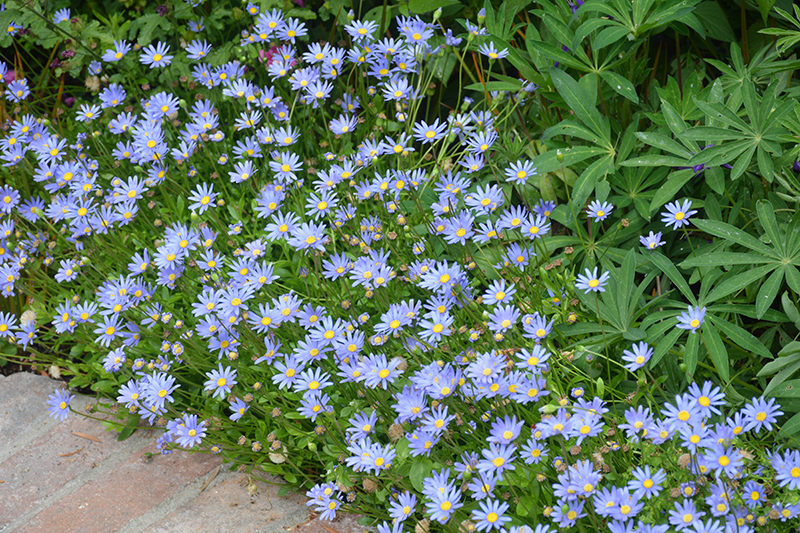Height: 24 inches
Spread: 24 inches
Sunlight:
![]()
Hardiness Zone: (annual)
Other Names: Blue Marguerite, Kingfisher Daisy, Blue Felicia
Description:
Covered with small daisy-like flowers throughout the summer and fall this variety is generally grown as an annual, but will form a shrubby spreading habit in its growth zones; wonderful along walkways, or in containers
Ornamental Features
Blue Daisy has masses of beautiful blue daisy flowers with yellow eyes rising above the foliage from early spring to early fall, which are most effective when planted in groupings. Its narrow leaves remain green in color throughout the year.
Landscape Attributes
Blue Daisy is a multi-stemmed annual with a mounded form. Its medium texture blends into the garden, but can always be balanced by a couple of finer or coarser plants for an effective composition.
This is a relatively low maintenance plant, and is best cleaned up in early spring before it resumes active growth for the season. It is a good choice for attracting bees and butterflies to your yard. It has no significant negative characteristics.
Blue Daisy is recommended for the following landscape applications;
- General Garden Use
- Groundcover
Planting & Growing
Blue Daisy will grow to be about 24 inches tall at maturity, with a spread of 24 inches. Its foliage tends to remain dense right to the ground, not requiring facer plants in front. Although it's not a true annual, this fast-growing plant can be expected to behave as an annual in our climate if left outdoors over the winter, usually needing replacement the following year. As such, gardeners should take into consideration that it will perform differently than it would in its native habitat.
This plant should only be grown in full sunlight. It does best in average to evenly moist conditions, but will not tolerate standing water. It is not particular as to soil type or pH. It is somewhat tolerant of urban pollution. This species is not originally from North America.



